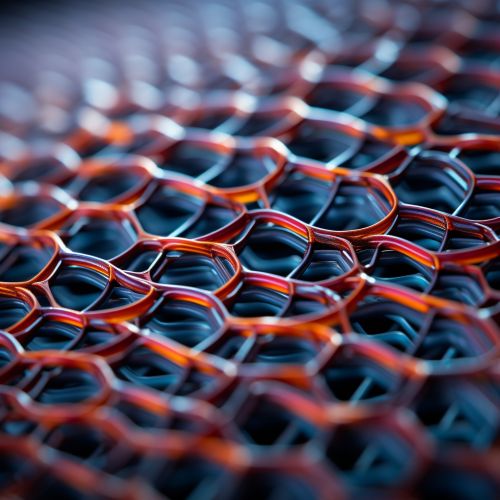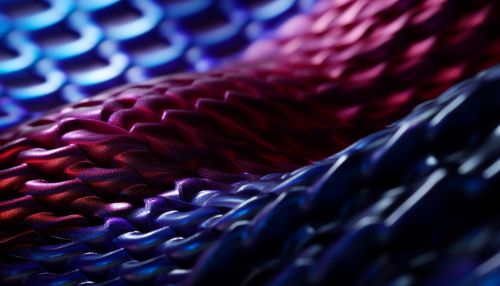Polymer Matrix Composites
Introduction
Polymer Matrix Composites (PMCs) are a type of composite material that consist of a polymer matrix combined with a fibrous reinforcing dispersed phase. The matrix holds the fibers together to form the composite material. PMCs are designed to transfer loads between fibers of a matrix. The matrix material surrounds and supports the reinforcement materials by maintaining their relative positions. The reinforcements impart their special mechanical and physical properties to enhance the matrix properties.
Types of Polymer Matrix Composites
There are two main types of polymer matrix composites: Thermosets and Thermoplastics.
Thermoset Composites
Thermoset composites are made from a polymer that irreversibly cures. The curing process changes the resin into an infusible, insoluble polymer network, and is achieved through the use of a catalyst, heat or suitable radiation. Thermoset composites are known for their high mechanical properties, chemical resistance and high operating temperatures.
Thermoplastic Composites
Thermoplastic composites, on the other hand, are made from a polymer that softens when heated and hardens when cooled. This process is fully reversible, as no chemical bonding takes place. This property of thermoplastic composites allows them to be remolded and recycled without negatively affecting the material’s physical properties. They are known for their toughness and the ability to be processed multiple times.
Applications of Polymer Matrix Composites
Polymer matrix composites are used in a variety of applications due to their high strength-to-weight ratio, superior mechanical properties, and resistance to environmental degradation. These properties make PMCs ideal for a wide range of uses including aerospace, automotive, marine, and construction applications.
Aerospace Applications
In aerospace, polymer matrix composites are used in structures of modern aircraft and spacecraft. They are used in the manufacture of wing boxes, fuselages, helicopter blades, and propellers. PMCs are chosen for these applications because they can withstand the extreme conditions of flight, such as high temperatures, high pressures, and high velocities.
Automotive Applications
In the automotive industry, PMCs are used in the production of body panels, bumpers, and structural components. The use of polymer matrix composites in automobiles reduces the vehicle’s weight, improving its fuel efficiency and performance. PMCs also have excellent crashworthiness characteristics, making them an ideal material for safety-critical components.
Marine Applications
In marine applications, polymer matrix composites are used to construct components of boats, submarines, and other marine vehicles. PMCs are resistant to the corrosive effects of salt water, making them an ideal material for marine applications.
Construction Applications
In construction, polymer matrix composites are used in the production of building materials for bridges, buildings, and infrastructure. PMCs offer the benefits of high strength-to-weight ratio and resistance to environmental degradation, making them an ideal material for construction applications.
Manufacturing Processes
There are several manufacturing processes for polymer matrix composites, including lay-up processes, filament winding, pultrusion, and injection molding.
Lay-Up Processes
In lay-up processes, the reinforcement material is laid in the open mold, and the polymer resin is poured, sprayed or otherwise applied to the mold. After the resin cures, the part is removed from the mold. There are two types of lay-up processes: hand lay-up and spray-up.
Filament Winding
In filament winding, continuous reinforcing fibers are soaked in a resin and then wound around a rotating mandrel in a predetermined pattern. Once the resin cures, the mandrel is removed, leaving the final part.
Pultrusion
In pultrusion, continuous strands of fiber reinforcement are pulled through a resin bath and then through a heated die. The resin cures as it goes through the die, and the resulting product is a constant cross-section part.
Injection Molding
In injection molding, the polymer matrix and reinforcements are combined, heated, and then injected into a mold. The mixture cools and hardens in the mold, forming the final part.
Future of Polymer Matrix Composites
The future of polymer matrix composites lies in the development of new materials, processes, and applications. Researchers are continually developing new polymer matrices, reinforcement materials, and manufacturing processes to improve the properties and reduce the costs of PMCs. In addition, new applications for PMCs are being discovered in industries such as energy, medical, and electronics.


